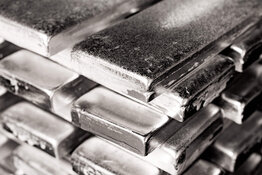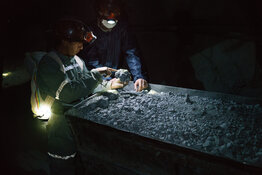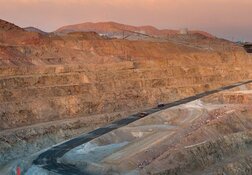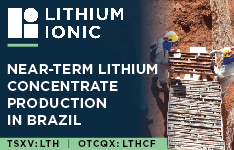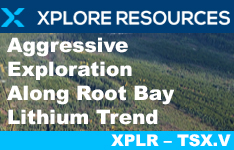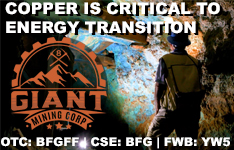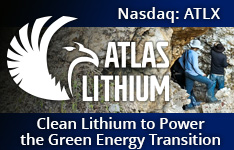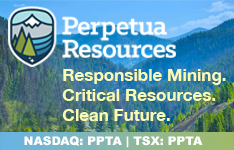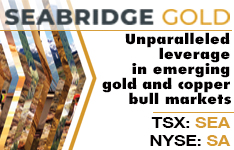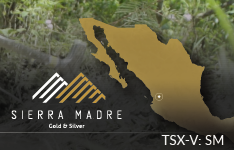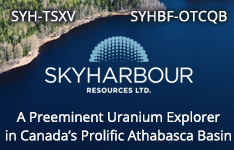Perpetua Resources Corp.'s (PPTA:TSX; PPTA:NASDAQ) Stibnite gold-antimony project in Idaho "merits immediate attention and endorsement" by the U.S. federal government, purported ROTH Capital Partners Managing Director Mike Niehuser in a July 22 research note. He bases his assertion on the importance of such a project to national defense, the current antimony price and the Department of Defense's (DOD's) previous funding of Stibnite.
"We view that from the DOD's perspective, given antimony's inelastic demand and multiple risks of adequate supply, advancement of the Stibnite gold project may be paramount," Niehuser wrote.
Recommended Buy, 56% return
ROTH's target price on Perpetua, $10 per share, implies a 56% potential return for investors given the U.S.-based company is trading now at about $6.41 per share.
U.S. needs domestic supplier
The U.S. needs the Stibnite project to come online for the antimony, a byproduct of gold mining, noted Niehuser. Today, China, Russia and Tajikistan control 90% of the global supply of this element; none is being produced in the States.
"This places the U.S.' manufacturing base and national security at risk should relations between the U.S. and China deteriorate," Niehuser commented.
Because the metal is used in various military applications, including artillery, grenades, shoulder-launched munitions, mortars and missiles, it is critical to warfighting, and the U.S.' support of Ukraine in its conflict with Russia has strained ammunition supplies.
Further, the DOD itself acknowledged the significance of Stibnite back in December 2022 when it wrote in a release, "Perpetua's Stibnite-Gold Project produced antimony trisulfide for the U.S. ammunition industrial base during World War II and the Korean War and it is the sole domestic geologic reserve of antimony that can meet Department of Defense requirements."
Metals prices, today v. 2020
The price of antimony trisulfide currently exceeds $10 per pound ($10/lb), which "demonstrates its price insensitivity and inelastic demand." On the day Niehuser wrote his research report, it was $10.42/lb, materially higher than the $3.50/lb price used in the base case outlined in the 2020 Stibnite feasibility study (FS).
The same is true for gold and silver. Today gold is about $2,400 per ounce ($2,400/oz) versus $1,600/oz in the FS. Silver is about $29/oz versus $20/oz in the FS.
"Current metal prices may suggest consideration of Case E, the most optimistic price scenario calculated in the 2020 feasibility study sensitivity analysis," added the analyst. "At current prices, this would suggest a net present value discounted at 5% of $2.943 billion ($2.943B) and an internal rate of return of 36.9%."
Additional financing potential
Niehuser noted that additional financing support may be available for Stibnite, in the form of debt financing from the Export Import Bank of the United States (EXIM) through its China and
Transformational Exports Program. EXIM indicated a potential to finance $1.8B of debt, which compares to Stibnite's $1.658B capex requirement indicated in the FS.
"This may significantly reduce financing risk for the Stibnite gold project," added the analyst.
He pointed out that the DOD has provided to date about $75 million ($75M) to Perpetua for Stibnite "for the purpose of determining acceptability of antimony trisulfide (Sb2S3, or stibnite) concentrate and to support permitting activities."
This total includes $34.6M (February 2024) and $24.8M (December 2022) through the Defense Production Act Title III, $15.5M (August 2023) from the DOD's Ordinance Testing Consortium and $200,000 (September 2022) from its Defense Logistics Agency.
Permitting to conclude this year
Niehuser highlighted that permitting of Stibnite is "coming into the home stretch." Perpetua expects to receive a final environmental impact statement and draft record of decision from the U.S. Forest Service in Q3/24, followed by a record of decision by year-end.
Project risks receding
As for environmental protections, Niehuser wrote that Stibnite's development was done "at or above industry standards, providing a once in a generation opportunity to restore fish spawning areas."
Regarding commodity price and financing risks, they are abating, with current metals prices and the possibility of debt financing from EXIM.
Potential lawsuits after Stibnite receives permitting "remains the highest concern for delaying construction," Niehuser pointed out but added that even these are less likely given the U.S. Supreme Court decision in Chevron U.S.A. Inc. v. Natural Resources Defense Council. An endorsement by the current U.S. Administration would further decrease litigation risk.
"We believe that there is the potential for unanimous agreement by all interested parties that construction of the Stibnite gold project will benefit fish, national security and investors," wrote Niehuser.
| Want to be the first to know about interesting Critical Metals investment ideas? Sign up to receive the FREE Streetwise Reports' newsletter. | Subscribe |



